Our outing began with a visit to the birthplace of the famous author Thomas Hardy, who wrote such classics as "Tess of the d'Urbervilles", "Far from the Madding Crowd" and "Under the Greenwood Tree". Although neither of us could claim to be big Hardy fans, Jane and I have both read several of his novels. I remember having to study "Jude the Obscure" at school, and I don't think I was thrilled by it at the time - perhaps a bit serious for a young teenager? Anyway, we were more interested in the social history aspects of the site, like seeing the small and rather austere but at the same time homely surroundings in which Hardy was born and raised. The family property - house, "granny flat" and garden, seemed so evocative of the archetypical English cottage.
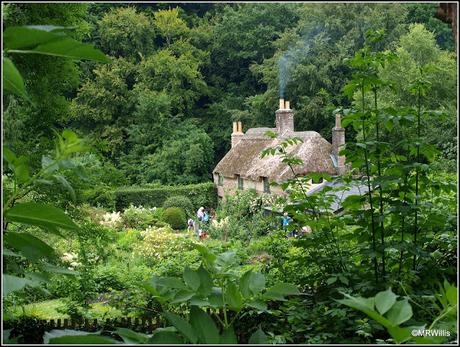
Hardy's birthplace, near Dorchester
In order to reach the cottage, you have to walk through a piece of ancient woodland, which was also of great interest to me with my love of fungi-hunting. This rather battered Stinkhorn (Phallus impudicus) was one of the specimens we saw.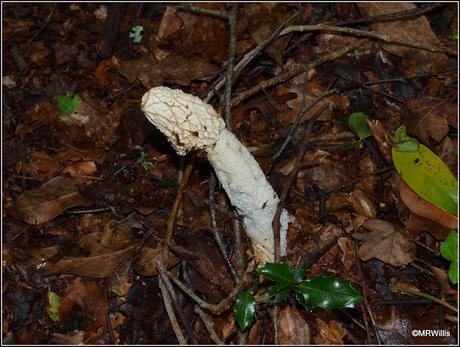
After visiting the Hardy cottage, we drove on to our hotel, which was at West Bexington, between Bridport and Weymouth. The little village is built on either side of a steep road that runs inland from the big shingle bank called Chesil Beach. This feature runs from West Bay, near Bridport to Portland Bill, a distance of some 29 kilometres. In places the shingle bank is nearly 50 metres high. That's a lot of shingle! Along the coast road there are many places where you can stop and admire the beautiful scenery. This next photo shows the shingle bank protecting a lagoon called the Fleet, and the isle of Portland in the distance. The lagoon only has one entrance from the sea, at the Portland end. Freshwater streams from the landward side mix with the salty seawater to make "brackish" (partially salty) water, and the lagoon has become a favorite stopover point for many types of migratory birds, particularly seabirds and waders.
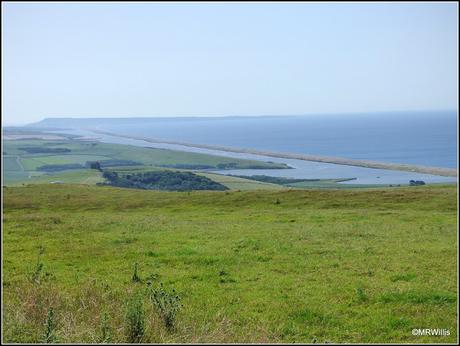
Even from our hotel room we were able to see the sea, and a small patch of the famous shingle. Who remembers Fawlty Towers and the view (or not) of the enormous herd of wildebeeste?
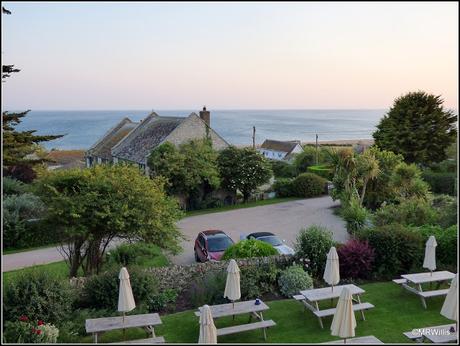
We had chosen to stay in West Bexington primarily because it is situated close to the Abbotsbury sub-tropical gardens, which were the main objective for our visit.
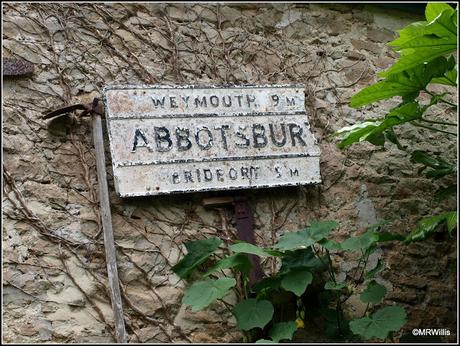
The gardens, which cover approximately 8 hectares / 20 acres, are located in a sheltered hollow just inland from Chesil Beach and in the lee of hills in all directions, giving it a very benign microclimate ideal for growing plants that would be unlikely to thrive elsewhere in Britain. If you are a keen gardener, this is a place that could hold your interest for many days! The sheer diversity of plant types is amazing. I would say that I only recognised about 20% of them. The garden is criss-crossed with dozens of winding paths, and around every corner is another carefully arranged vista.
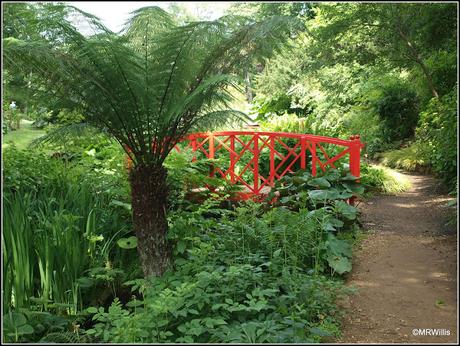
I was particularly interested to see how full use had been made of Nature in all its forms - for instance this 200 year old Oak tree which came down in a storm in the year 2010 has been left in situ and carved into the shape of animals and birds, like this:
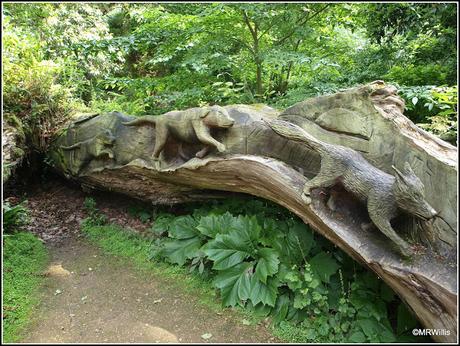
Tally Ho!
I also liked the Burma Jungle Rope-bridge. It reminded me of some of the bridges I had encountered in Nepal during my Army days (though it was in much better shape than they were!)
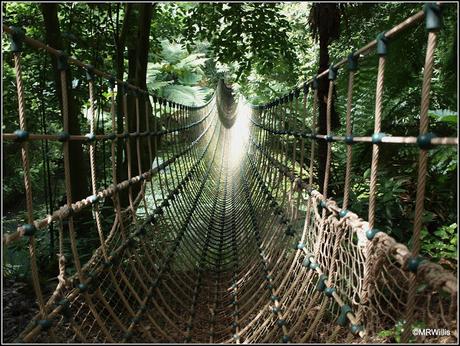
After visiting the gardens we moved on to the nearby Abbotsbury Swannery. To be honest, we hadn't expected to be very interested by the Swannery, but it turned out to be a really amazing experience. It is located on the landward side of the Fleet lagoon (see above), and only a few hundred yards from the sub-tropical gardens (as the crow flies...) The site is a sanctuary and breeding colony, not a zoo, and all the swans are free to fly off whenever they like - though I suspect the fact that they are fed twice a days means that few of them do! We had expected to see maybe a few dozen swans, but actually there are now between 700 and 800 of them, as well as many many geese, ducks, moorhens, coots etc!
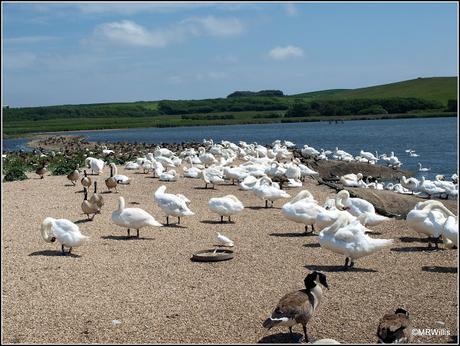
All of this year's swan eggs had hatched, but there were loads of cygnets to see.
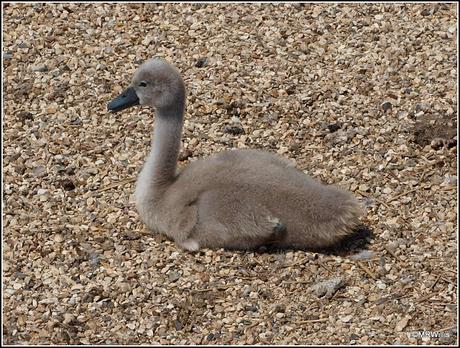
Although the Swannery is primarily a place to see swans, it has lots more to offer: extensive reed-beds which provide habitat for many different types of bird and small mammal, a fully functioning duck-decoy (used these days for capturing then ringing ducks), hides for bird-watching, a maze, pedal go-karts for the kids, etc, and all fully interpreted via information boards and displays. A really good attraction!
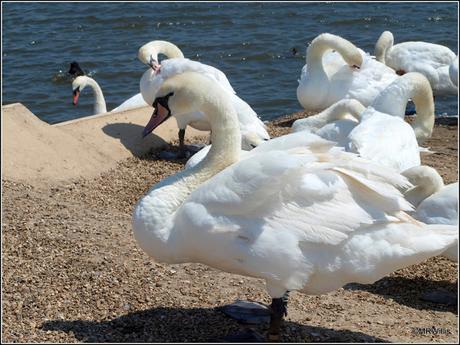
On Day 3 of our outing, we came home via the town of Weymouth and spent a couple of hours at the historic Nothe Fort, learning about its role in protecting the former Naval Base at Portland.
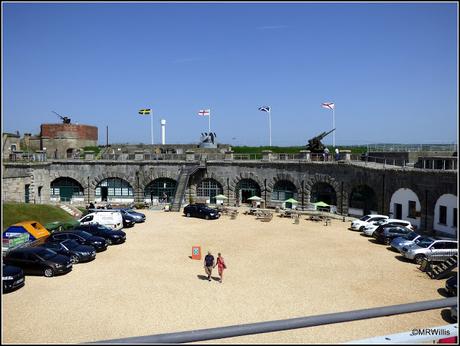
Interior view of Nothe Fort
This huge, solidly built edifice was initially constructed during Victorian times and progressively updated, particularly in terms of its armament, the last of which was only decommissioned in 1956.
For a military history enthusiast like myself, this is a fascinating place. Quite apart from the building and some representative pieces of its former armament, the site has extensive displays of military equipment and some fabulous "dioramas" featuring scale models and figures which depict episodes in the history of Weymouth from Roman times to the Second World War.
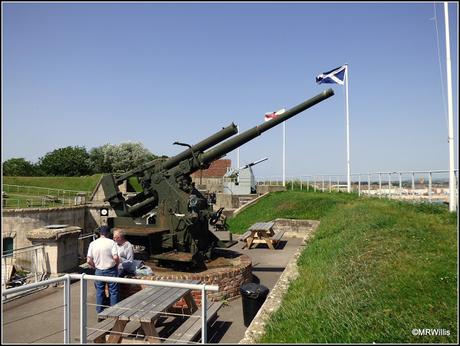
3.7" anti-aircraft gun, one of 4 which were sited just outside the fort during WW2.
From the fort you can look South towards Portland, with superb views of the breakwaters, jetties and other defences of the former naval base ("Portland Roads") , while to the North you can see the town of Weymouth with its long Esplanade and beach. North-East of the town you can just make out the Osmington white horse figure carved on the limestone hillside.

Osmington White Horse
This figure, carved in 1808, represents King George III, who was a frequent visitor to Weymouth.
Weymouth was the last stop on our trip, after which we headed home. We had a great time - we saw lots of interesting plants, fungi and wildlife, learned some history, chilled out in the sunshine (miraculously it didn't rain!) and drank some very nice wine. An undemanding and very enjoyable short break, within easy reach of home: job done!
